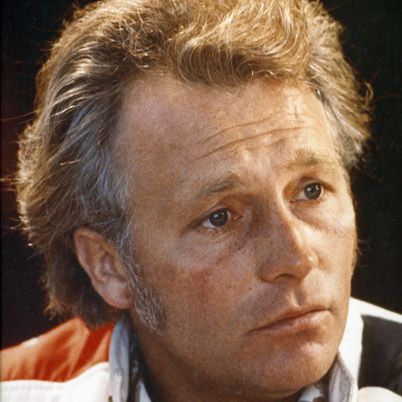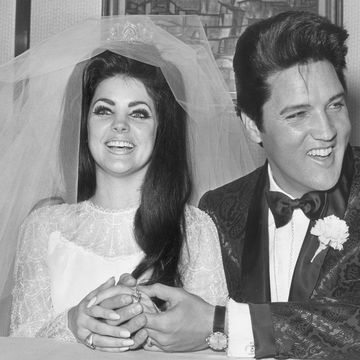(1938-2007)
Who Was Evel Knievel?
Evel Knievel was an American daredevil who attempted more than 75 ramp-to-ramp motorcycle jumps. Some of the more famous include flying over the fountain at Caesars Palace in Las Vegas, jumping over busses at London’s Wembley Stadium, and an aborted trip across the Snake River Canyon in a steam-powered vehicle. Starting from humble and somewhat troubled beginnings, Knievel became an international icon in the 1970s for his incredible motorcycle stunts.
Early Life
Evel Knievel was born as Robert Craig Knievel Jr. on October 17, 1938, in Butte, Montana, a copper-mining town that, at the time, resembled a 19th century boom town. For most young men the future was limited to working in the mines, working in town, or working on one of the surrounding ranches. Though Knievel was a standout athlete in track and field and hockey, he struggled in school. His parents had divorced when he was young and he was raised by his grandparents. After dropping out of high school, he bounced from one odd job to another. Before too long, he was arrested for robbing hubcaps, motorcycles, and generally being a menace. While working for a construction company he attempted to do “wheelies” with an earth mover and collided into Butte’s main power line causing a major blackout.
He joined the U.S. Army in the 1950s and volunteered for paratrooper school, making over 30 jumps, all successful. Afterword, he drifted again playing some semipro hockey and eventually taking up motorcycle racing. Too many falls and broken bones led to an early retirement from racing but not from motorcycles and stunts.
Nickname
Knievel’s nickname supposedly came after a police chase in 1956. He had stolen a motorcycle, crashed it and was taken to jail. The night jailer evidently liked to give the inmates nicknames. Another inmate residing in the jail that evening was William Knofel, whom the jailer dubbed “Awful Knofel.” For Knievel, the jailer bestowed the moniker “Evil Knievel.” Years later, Knievel legally changed his name and the spelling to Evel Knievel.
Evel Knievel's Stunts
By 1966, Knievel had moved to Moses Lake, Washington, where he worked in a motorcycle shop. To help drum up business he announced that he would jump a motorcycle 40 feet over parked cars and a box of rattlesnakes, then continue on past a caged cougar. In front of 1,000 people, he made the jump, but fell short, landing on the rattlesnakes. The crowd went wild and a new career was born for Knievel.
It was the 1960s and Americans were going to the moon. Knievel saw opportunity. The idea of a man hurtling himself through space with only a “crotch-rocket” between him and disaster just might get some people’s attention. Inspired by the exploits of acclaimed stunt driver Joie Chitwood, Knievel formed a stunt group called Evel Knievel’s Motorcycle Daredevils and took the county fair circuit by storm. The troupe performed wheelies, blasted through walls of burning plywood, and jumped over vehicles. But after several crashes and more broken bones, Knievel had to stop to repair his body.
Caesar's Palace
While visiting Las Vegas he noticed the fountains at Caesar’s Palace casino and felt he was ready for the big time. Through guile and audacity, Knievel constructed a fake promotional campaign and eventually captured the attention of Caesars Palace CEO Jay Sarno, and proposed to jump the casino’s fountain. Takeoff and landing ramps were set up in the casino’s parking lot. On December 31, 1967, Knievel roared off the first ramp with a near perfect take off. The crowd was just about to explode into cheers. As Knievel approached the landing ramp, the motorcycle’s rear wheel caught its edge. The impact wrenched the handlebars out of Knievel’s hands and his helpless body bounced like a ragdoll. The crowd was stunned, with gaping mouths waiting for the crash to end. Knievel suffered a crushed pelvis and femur, fractures to his hip, wrist and both ankles and a concussion. He was in a coma for 29 days.
Through the 1970s, Knievel attempted one jump after another each with longer distances and more formidable barriers. He crashed many times, breaking bones, snapping tendons and spending weeks in the hospital. ABC’s Wide World of Sports featured him on five different occasions performing his stunts. The power of television made him a hero to young boys all across America. Knievel cultivated his image well. Clad in his iconic star-spangled white jumpsuit he marketed his brand through toy manufacturers and appeared on anti-drug promotional tours and motorcycle safety commercials. He became a household name as much for his daring jumps as for his catastrophic falls, earning himself the somewhat disparaging nickname “Crash Knievel.”
Snake River Canyon
In his quest to find more daring and dangerous jumps, Knievel asked the Department of Interior if he could jump over the Grand Canyon. His request was denied. Undaunted, he set his sights on Idaho’s Snake River Canyon. In 1972 Knievel announced he had leased a parcel of private land, hired a film crew and an aeronautical engineer. He spent over two years in testing and development and by the fall of 1974, he was ready. He landed himself a cover on Sports Illustrated that came out only a few days before the September 8, 1974 jump. His vehicle, dubbed the Skycycle, was a steam-powered machine that resembled a re-entry vehicle more than a motorcycle.
For many the result didn’t match up to the hype. Seconds after the Skycycle rocketed off the launch rail the parachutes deployed and the vehicle drifted helplessly back to earth on the same side of the canyon where he took off. However, Knievel was immortalized in the Smithsonian Institution as "America's Legendary Daredevil."
Wembley Stadium
On May 26, 1975, Knievel attempted to jump 13 single-deck busses at Wembley Stadium in London, England. A feature on ABC’s Wide World of Sports, the first part of the jump went well as Knievel sailed 10 feet or more across the busses. Just as he landed on the ramp, his rear tire seemed to come down too hard and he bounced off the cycle still running at full throttle. The motorcycle crashed into him and many in the crowd including the announcer, thought this might be the end. After landing in a heap, medics picked him up in a gurney and headed for the ambulance. Knievel’s back was broken but he wouldn’t be beaten. He struggled to get off the gurney and walked to a podium where he announced his retirement. Later he stated he had walked into Wembley Stadium and he was going to walk out.
The announcement proved premature as Knievel talked himself into one more jump. On October 25, 1975 at Kings Island, near Cincinnati, Ohio, Knievel successfully jumped over fourteen Greyhound busses. The event proved to be his longest successful jump at 133 feet. After an aborted attempt to jump a shark tank in 1977, Knievel went into semi-retirement appearing in small venues and promoting the career of his son Robby Knievel as a daredevil jumper.
Final Years and Death
In his final years, his career experienced highs and lows. In 1977, he was convicted of assault and battery and sentenced to six months in jail. The episode cost him many of his promotional contracts and he declared bankruptcy in 1981. After being fined for soliciting an undercover police woman for prostitution, he and his wife of 38 years divorced. He married his longtime partner Krystal Kennedy in 1999, but later the couple divorced though they remained together.
For several years, Knievel had suffered from diabetes and liver problems, the latter believed to have been caused by a bout of hepatitis C, most likely brought on by tainted blood transfusions. He also suffered from pulmonary fibrosis after too many crashes.
On November 30, 2007, Knievel, who defied death for decades, died in Clearwater, Florida. His death came just two days after it was announced that he and rapper Kanye West had settled a federal lawsuit over the use of Knievel's trademarked image in a popular West music video. In one of this last interviews, he told Maxim Magazine, “I was a daredevil, a performer. I loved the thrill, the money, the whole macho thing. All those things made me Evel Knievel. Sure, I was scared. You gotta be an ass not to be scared. But I beat the hell out of death.”
Son
Among Knievel's four children (Knievel had two sons and two daughters with former wife Linda), Robert "Robbie" III followed in his father's footsteps and became a professional stuntman. Building his skills at age four, Robbie began officially touring with his father when he was 12.
Pastrana's Re-Creation
Knievel's legend was revived on July 8, 2018, for History's Evel Live, in which stuntman and motocross racer Travis Pastrana attempted to replicate three of the daredevil's famed jumps. After flying over 52 cars and then 16 buses, Pastrana held on to land his jump over the Caesar's Palace fountain, avoiding the disastrous finish that had hospitalized his predecessor 50 years earlier.
QUICK FACTS
- Birth Year: 1938
- Birth date: October 17, 1938
- Birth State: Montana
- Birth City: Butte
- Birth Country: United States
- Gender: Male
- Best Known For: Evel Knievel was an American daredevil who became an icon in the 1970s for his incredible motorcycle stunts.
- Industries
- Sports
- Astrological Sign: Libra
- Death Year: 2007
- Death date: November 30, 2007
- Death State: Florida
- Death City: Clearwater
- Death Country: United States
Fact Check
We strive for accuracy and fairness.If you see something that doesn't look right,contact us!
CITATION INFORMATION
- Article Title: Evel Knievel Biography
- Author: Biography.com Editors
- Website Name: The Biography.com website
- Url: https://www.biography.com/celebrities/evel-knievel
- Access Date:
- Publisher: A&E; Television Networks
- Last Updated: July 28, 2020
- Original Published Date: April 2, 2014
QUOTES
- Anybody can jump a motorcycle. The trouble begins when you try to land it.












